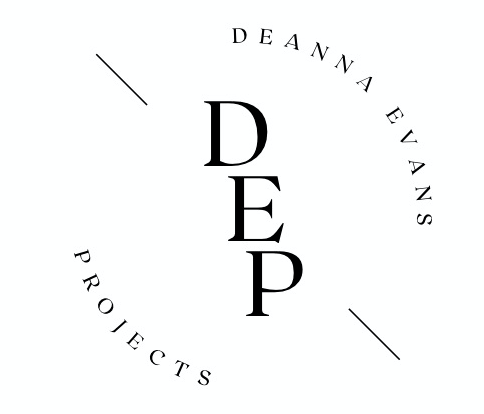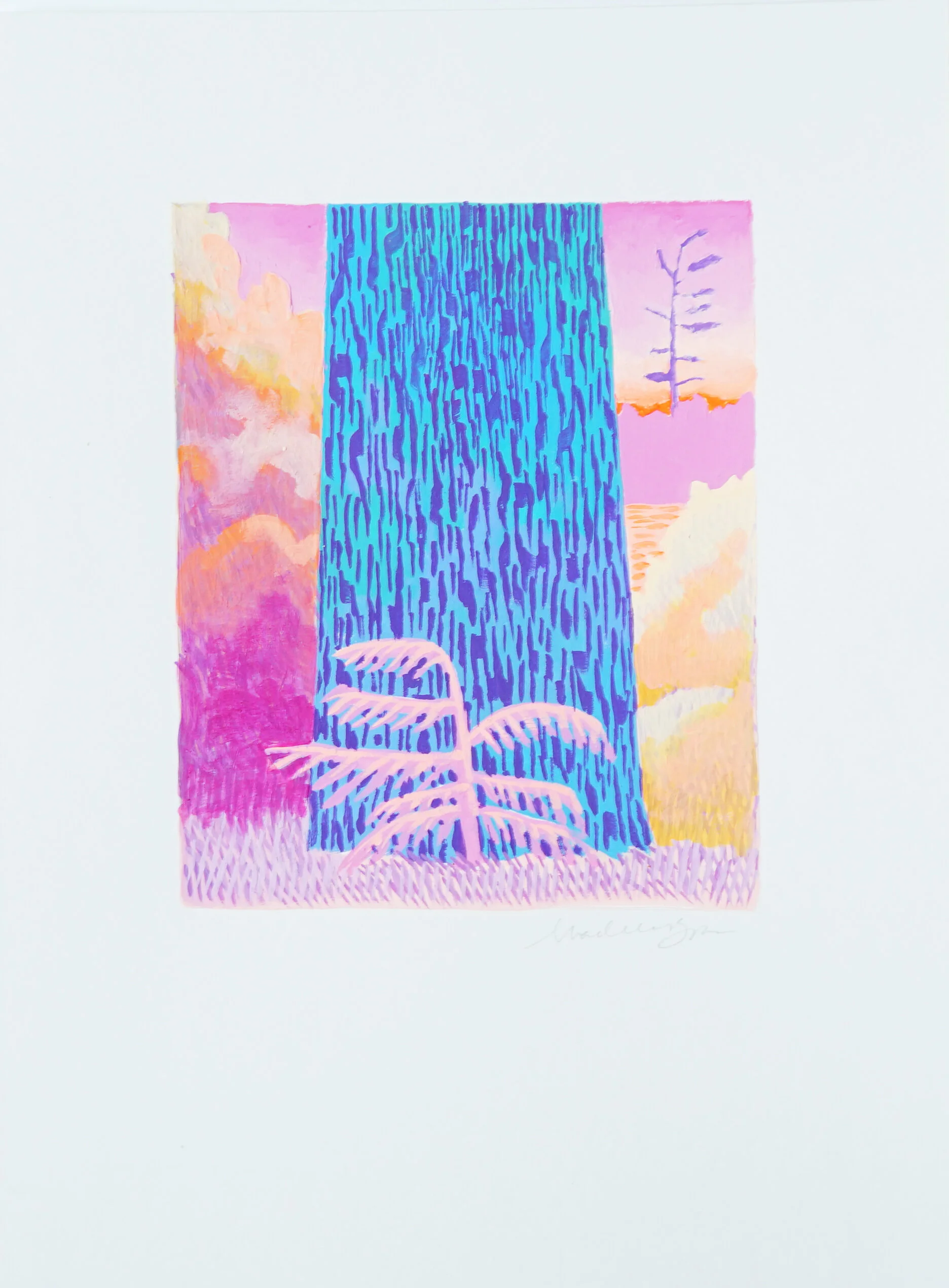Madeleine Bialke’s
Care Package
The Care Package Project is a new approach to exhibiting art in the time of COVID-19. Six artists have been asked to put together a “care package” of small artworks along with good books, articles, recipes, etc. that have brought them comfort or inspiration during this time of isolation. With this, we hope to bring more of a human feel to online exhibitions and a sense of community and connection during this time when we can’t be physically together. To open up accessibility, all works will be available for direct purchase online. Lastly, for those who are not in a position to acquire works from the exhibitions, we ask that you show your support by donating to the organization of the artist’s choice as a sign of solidarity. The organization’s details will be provided during each artist’s online exhibition, including a direct link to the donation page.
Madeleine’s package includes new paintings, works on paper, a curated music playlist (available on Spotify!), and various books and even a recipe (see full details below)! As a part of her package, she is raising awareness for Climate Justice Alliance and WEDO (Women’s Environment & Development Organization).
I found it very hard to completely finish or even get invested in a book as soon as the lockdown hit New York State in March. Anxiety and obsessive news checking could be symptoms of this new reading difficulty, which hasn’t improved over the summer. I’m also not on the train anymore which was prime reading time. However, books are still a large part of my world, I’ve just turned to “picture books,” mostly, for reference in my studio practice and visual life.
Alex Katz: Quick Light
This is an overview of a show I didn’t see at Serpentine Galleries in London; half recent work (from 2016), half retrospective. Some figures, some landscapes. I spent the summer at a family camp in the Adirondacks and let Alex Katz’s landscapes inform how I looked at the trees shapes outside at dusk. His direct statements of silhouette and sky and the stark simplicity of his tree shapes and how he transforms them into pattern changed how I approached these subjects in my own drawings. Nature can look so overwhelmingly complicated, which is sometimes off-putting. Katz treats the landscape like a very understandable old friend.
The Common Loon: Spirit of the Northern Lakes, by Judith W. McIntyre
This was written in the 80’s by my great-aunt. Her research mostly took place at my family camp in the Adirondacks, and the illustrations and diagrams were drawn by my mother. The camp is steeped in loon lore, and when I was growing up my aunt would take me and my sisters out on the research boat to spot loons and loon-lings up along the lake. This summer, a pair of loons raised a chick on an island right outside the camp, and the book became a guide to observing the growth of the chick and understanding the actions of both loon parent and offspring.
Murder in the Adirondacks: An American Tragedy Revisited, by Craig Brandon
An investigation of the true story of the murder of Grace Brown by Chester Gillette on Big Moose Lake in the foothills of the Adirondacks, which was the basis of Theodore Dreiser’s classic novel An American Tragedy. This book accounts the facts behind the fiction and analyzes why and how the sensational story was front page news in 1906. This book was meaningful to me last year because of how tragedy is colored through an American lens, how fact can become distorted over time.
Remembrance of Things Past: Volume II, The Guermantes Way & Cities of the Plain, Marcel Proust (Translated by C. K. Scott Moncrieff and Terence Kilmartin)
When the lockdown began I found it very hard to get into and finish novels. I’ve been slowly chipping away at these Proust translations for years, and to my surprise this is the book I keep picking up during this time. Very little happens plot-wise so it’s easy to get back into at any time, and the world of the narrator-- French society around 1900-- is so different than present that it feels like a true escape (although many of the emotions and relationships he describes are quite universal). The societal commentary is often humorous, and largely doesn’t weigh heavy. It feels like a treat.
Horses Make a Landscape Look More Beautiful, Poems by Alice Walker
Alice Walker is very deft at weaving the personal/emotional with the political, and this selection of poems is about racial injustice and saving the earth from self-destruction. Published in 1984 it is no less relevant, passages such as “These mornings / in Fall / when I have slept late / and dreamed / of people I like / in places where we’re / obviously on vacation”.
Audubon Game Animals: A Selected Treasury for Sportsman
This remains one of my most leafed-through reference books. Audubon was pretty great at drawing birds, kind of hit or miss with his mammals. They’re really charming and very beautifully detailed illustrations of North American mammals, and the book feels like a time capsule—some of these mammals no longer exist or have severely reduced numbers.
Very Easy Bread Recipe
Simple enough so it becomes second nature, I make this bread a couple times a week, am a real avid bread-eater.
1 T yeast
1 T salt
1 T sugar
2 C warm water
4 c. Bread Flour
1 T olive oil
2T or whatever of corn meal
whisk yeast, salt and sugar together in large bowl. Pour the warm water into the large bowl and whisk. Leave until the yeast rises / dissolves. Amount of salt and sugar is up to you, I like more salt and sugar because it tastes like restaurant bread, which I miss.
Add the bread flour, one cup at a time, to the mixture. Knead on a floured or metal surface for approx. 5 minutes.
Wash the bowl, wipe sides of the bowl down with 1 T of olive oil, then place kneaded dough back into the bowl and set somewhere warm to rise, covered with a kitchen towel. Leave for an hour or so, until the dough has risen.
Preheat oven to 400 degrees, and place baking pan with 1 inch of water on lowest shelf.
On another baking sheet, dust copiously with corn meal so the bread won’t stick to the pan, set aside.
Punch the dough down, then separate into two rounds. Turn the rounds inside out, more or less, to make smooth, and place on cornmeal baking sheet. Wet hands and rub the loaves with water. Score two or three marks with a sharp knife or razor blade. Set to rest as oven preheats.
Place baking sheet in oven above baking pan with water, retrieve after 35/40 minutes. Let rest 10 minutes, then slice and enjoy!
Spotify Playlist:
A selection of the artists I’m often listening to while painting. Shout out to Weyes Blood for her album Titanic Rising, teetering on the edge of being on the nose, atmospheric apocalyptic songs about love and loss. Also, to Spotify for giving me an unending supply of very gentle Bossa Nova to calm my little nerves after digesting daily news.
Organizations to support:
Climate Justice Alliance
WEDO (Women’s Environment & Development Organization)


















